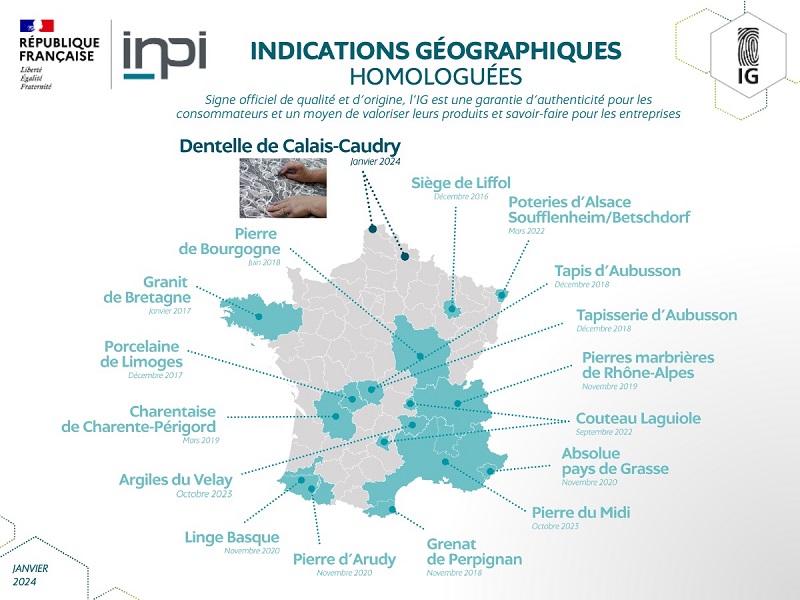“Calais-Caudry lace” is now approved as a Geographical Indication by the INPI, bringing the number of geographical indications to 17 since the system came into force. Another notable fact is that this is the first geographical indication for the Hauts-de-France region.
“Congratulations to the lacemakers of Calais and Caudry for obtaining this geographical indication. Calais-Caudry lace is one of the emblematic products of French craftsmanship identified since the implementation of the system as eligible for such recognition. Long awaited by everyone, this approval reflects the efforts and perseverance of those involved in the sector. In a sector where counterfeiting represents a real shortfall, I am convinced that this geographical indication will protect the historical and high-quality know-how of these artisans. highlights Pascal Faure, Director General of the INPI.
The geographical indication “Calais-Caudry lace” covers all forms of lace (bands, braids, ruffles, etc.). All lace manufacturing and thread preparation operations must be carried out in the Pas-de-Calais and Nord departments.
Calais-Caudry lace has been made in the north of France for 200 years, using precise know-how. It is obtained thanks to an ancestral manufacturing process which consists of weaving the threads exclusively on a Leavers loom - named after its inventor. These cast iron and steel machines arrived from England around 1816. They made it possible to produce lace that was both fine and strong, and was thus distinguished from so-called “knitted” lace.
Thanks to these technical developments, the lace industry developed in Calais then in Caudry, from the beginning of the 19th century. Calais then became the capital of lace, more specifically for lingerie, while Caudry specialized in the manufacture of lace for dresses. Today, this pool concentrates 70% of the Leaver professions still existing in the world.
Calais-Caudry lace is also an emblem of French luxury: highly appreciated by major fashion houses, it allows for high-quality, particularly elegant creations. At the beginning of September, she experienced a global spotlight when singer Beyoncé wore a black dress made from Calais-Caudry lace for the opening of one of her concerts.
Eight companies are affected by this approval. They represent 400 jobs and a turnover of around 19 million euros.
The “IG lace de Calais-Caudry” association is the organization responsible for the defense and management of the eponymous geographical indication.
Photo: RawPixel



